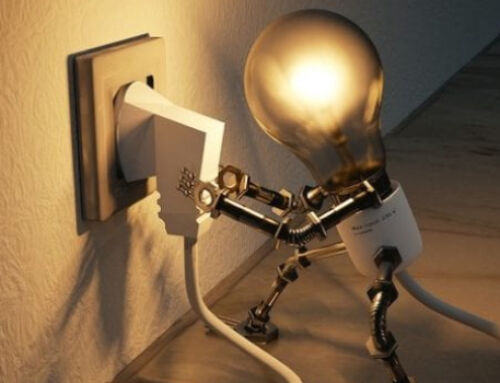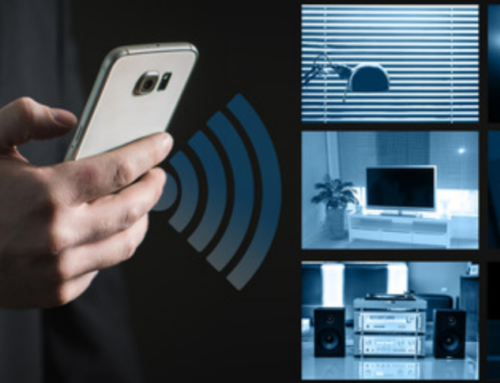In today’s world, electricity is a necessity, and it’s hard to imagine our daily lives without it.
From lighting up our homes to powering our electronic devices, we rely on electricity for almost everything. However, with this reliance on electricity comes the occasional issue of a tripped circuit breaker.
“What does it mean when a circuit breaker trips?”
When a circuit breaker trips, it cuts off power to the circuit it protects, leaving you in the dark and potentially causing damage to your electrical system. This can be a frustrating and stressful experience, especially if you’re not sure how to deal with it.
If you’re living in Sydney, you’re likely familiar with the frequent occurrence of tripped circuit breakers due to the high electrical demand for modern appliances and devices.
Tripped circuit breakers can happen due to various reasons, such as:
- Overloaded circuit
- Short circuit
- Ground fault
Knowing how to identify the cause and how to deal with a tripped circuit breaker is essential to keep your electrical system running smoothly and safely.
In this guide, we’ll guide you through the steps you need to take when a circuit breaker trips to Sydney. We’ll also discuss the precautions you can take to prevent tripped circuit breakers in the future. With this knowledge, you’ll be better equipped to deal with a tripped circuit breaker and keep your home safe and comfortable.
What to do when a circuit breaker trips in your Sydney: Step-by-step
Step #1: Identify the Cause of the Trip
The first step in dealing with a tripped circuit breaker is to identify the cause. There are many potential reasons for a circuit breaker to trip, including
- Overloaded circuit: This happens when too many appliances or devices are running on the same circuit.
- Short circuit: A short circuit occurs when two electrical wires touch that shouldn’t, causing a surge of electricity.
- Ground fault: A ground fault happens when a live wire comes into contact with a grounded surface.
To identify the cause of the trip, start by unplugging all devices and appliances from the affected circuit. Then, try resetting the breaker. If it trips again immediately, there may be a more serious underlying issue that requires professional attention.
Step #2 – Reset the Circuit Breaker
Wondering how to reset a tripped breaker?
You should only hit the reset switch AFTER you’ve determined the cause the trip, so ensure you’ve completed step #1 before moving on.
Once you’ve identified the cause, simply locate your electrical panel and find the tripped breaker. It will be in the “off” position, meaning the switch will be pointing in a direction opposite to the other switches in the panel. Flip the switch back to the “on” position, and the power should be restored.
Step #3 – Reduce the Load on the Circuit
If the circuit breaker trips again after you’ve reset it, you may need to reduce the load on the circuit. This means unplugging or turning off some of the devices or appliances that are using the circuit. Try to spread your devices across multiple circuits to avoid overloading any one circuit.
Step #4 – Call a Professional Electrician
If you’ve tried resetting the circuit breaker and reducing the load on the circuit, but the breaker keeps tripping, it’s time to call in professional electrical services. This can be the simplest and most effective way to find what is tripping your circuit breaker.
A licensed Sydney electrician can inspect your electrical system and identify any underlying issues that need to be addressed. They can also make any necessary repairs or upgrades, as well as provide electrical maintenance, to ensure that your electrical system is safe and up-to-code.
Step #5 – Take Precautions to Prevent Tripping in the Future
To prevent circuit breakers from tripping in the future, there are several precautions you can take.
Here are a few ideas:
- Do not overload a circuit with too many devices.
- Use surge protectors to protect your devices from power surges.
- Have a certified electrician evaluate your electrical system regularly.
- Consider upgrading your electrical panel if it’s old or outdated.
Additional tips to manage circuit breaker trips
Check for Loose Wires
If you’ve tried all of the above steps and the circuit breaker is still tripping, it could be due to loose wires as these can be a common reason your circuit breaker is having trouble.
Inspect the wiring of the affected circuit for any signs of damage or loose connections. It’s better to consult a certified electrician if you’re uncomfortable working with electrical wiring.
Replace the Circuit Breaker
If your circuit breaker keeps tripping, it could be a sign that it’s worn out and needs to be replaced.
Over time, circuit breakers can become less effective and trip more easily. A licensed electrician can inspect your circuit breaker and determine if it needs to be replaced. It’s important to replace a faulty circuit breaker as soon as possible to prevent any electrical hazards.
Install GFCI Outlets
Ground fault circuit interrupter (GFCI) outlets are a type of outlet that can help prevent electrical shocks and tripped circuits.
These outlets detect imbalances in the electrical current and quickly shut off the power to prevent any electrical hazards. Installing GFCI outlets in areas where water is present, such as the kitchen or bathroom, can help prevent tripped circuits and keep you safe.
Upgrade Your Electrical Panel
If you have an older Sydney home, your electrical panel may not be able to handle the electrical demands of modern appliances and devices.
Upgrading your electrical panel can increase your home’s electrical capacity and prevent circuit breakers from tripping. A licensed electrician can inspect your electrical panel and determine if an upgrade is necessary.
Don’t Ignore Tripped Circuit Breakers
It’s important not to ignore tripped circuit breakers. Ignoring the issue can lead to electrical hazards and potentially dangerous situations. If your circuit breaker keeps tripping, it’s important to address the issue as soon as possible. This will not only ensure your safety but also prevent any damage to your electrical system.
Keep this circuit breaker ‘response plan’ handy
A tripped circuit breaker can be a common issue in Sydney homes, but it’s important to address the problem promptly and safely.
By following the above steps, you can safely deal with a tripped circuit breaker and prevent it from happening in the future.
Remember to prioritise safety, and if you’re unsure about anything, it’s best to call a licensed electrician. With a little bit of knowledge and preparation, you can keep your electrical system running smoothly and avoid any unexpected disruptions.
Turn to HunterCON for all things air conditioning
There’s no one better in Melbourne when it comes to all things electrical than the team at HunterCON.
We offer a range of residential and commercial electrical services (as well as expertise across all popular A/C styles and brands). When you need the best for your Sydney home or business, trust the best in HunterCON.
We also offer fast and free quotes so you can accurately budget for your next electrical service with zero surprises.
Call us on 02 8283 1105 or request a 100% obligation-free quote online today to learn more!
Looking for help keeping your home cool this summer? Explore our service below…






